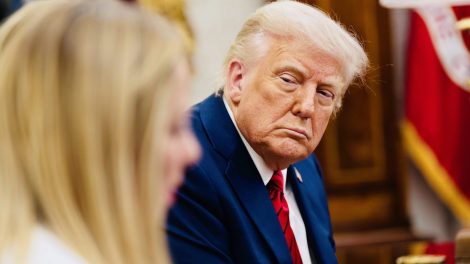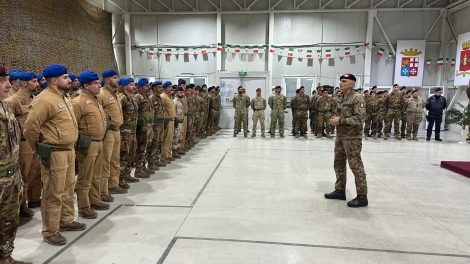Italy sends ship to the Indo-Pacific. Rome is actualising its growing interest in the Southeast Asia region – and in the concept of indivisible security – by means of material assets. The Italian Navy will send the Morosini, a Paolo Thaon di Revel-class offshore patrol vessel launched in 2020, for patrolling activities alongside allied activities.
- Italy will also be engaged in exercises with “friendly navies,” as revealed by the Italian Navy’s Chief of Staff, Admiral Enrico Credendino, to our sister website.
- As the Undersecretary for Foreign Affairs told our sister website, China “is an issue on the global political agenda,” as it’s progressively tightening its grip on Taiwan with exercises in neighbouring air and sea space.
The “free and open” world vision… In late January, a key group of countries – Australia, Japan, New Zealand, South Korea and the EU – held their first (virtual) talks among deputy foreign ministers, agreeing to pursue specific cooperation in the Indo-Pacific region to “maintain the free and open international order based on the rule of law”.
- This well-known formula, often used by European and US diplomacy to allude to China’s maritime assertiveness in the area, refers to the vision for the region bequeathed by the late Japanese Prime Minister Abe Shinzo, “the free and open Indo-Pacific.”
… and how Rome is working to uphold it. During the meeting, European delegates discussed how to strengthen the security partnership with the four Indo-Pacific countries, especially after Russia launched its invasion of Ukraine in February 2022. Italy, on its part, is increasingly committed to strengthening ties with regional actors.
- Italy and Japan recently elevated their relationship to a “strategic partnership” in the wake of entering, along with the United Kingdom, into a joint project (known as GCAP) to develop the sixth-generation fighter jet.
- Defence Minister Guido Crosetto may also travel to Indonesia to meet his counterpart Prabowo Subianto, who already expressed his appreciation for Italy’s “commitment to the current geostrategic framework and its technological excellence.”
- Finally, Italy and India are slated to strengthen ties – including through a new defence cooperation agreement – as early as next month.
Where does NATO fit in? At the January virtual meeting, participants also discussed how to increase the involvement of the EU and other like-minded nations in the Indo-Pacific region. And within this framework, NATO plays a decisive role, as explained by Secretary-General Jens Stoltenberg during his January visit to Seoul and Tokyo.
- The Alliance considers Australia, NZ, Japan and South Korea partner nations. Their respective leaders were first invited to the 2022 NATO Summit in Madrid. Cooperation and joint dossier activities are ongoing, as well as several forms of alliances and collaboration ranging from the Quad to the Five Eyes and AUKUS.
- On the other hand, it was the conflict in Ukraine that gave a boost to these security-minded dynamics, which European, American and Asian planners had already conceived intending to contain and confront the assertive rise of China.
- All these aspects emerged in the NATO and EU planning, entrusted to the Strategic Concept and Strategic Compass, respectively, and are clearly traceable in the new Japanese and South Korean national security strategy documents.
The expert’s take. “Throughout 2022, Japanese policymakers explicitly linked Russia’s aggression on Ukraine with China’s more assertive foreign and security policy, along with narratives linking Xi Jinping’s one-party government with Vladimir Putin’s, with greater public attention devoted to military security in general, as well as military contingencies across the Taiwan Strait,” explained Giulio Pugliese to our sister site.
- (Mr Pugliese is a lecturer at OSGA in Oxford, a Senior Fellow at the Italian Institute of International Affairs, a part-time Professor at the Robert Schuman Centre of the European University Institute, and one of the leading Italian experts on the Indo-Pacific region.)
Converging on security. All this, plus North Korea’s recent military demonstrations, are favouring the recovery of ties between Japan and South Korea, said the expert. “The two countries have resumed military exercises and have even promised to exchange military information in real-time by the end of the year.”
- Through functional initiatives on security and economics, the Japanese government has bridged the gap between like-minded actors in the Euro-Atlantic and Indo-Pacific theatres.
- South Korea’s executive is trying to do the same, and it is no coincidence that SG Stoltenberg left Seoul with the promise of increased Korean engagement in assistance to Ukraine.
- Meanwhile, the China-Japan-South Korea mini-lateral framework is not in great shape – the last meeting was in 2019.
Along US lines. “These initiatives are perfectly in line with the US government’s willingness to circumvent the dysfunctionalities of the UN-based multilateral system by cementing ad hoc coalitions among democratic allies, as exemplified by AUKUS, the Quad, the Blue Pacific Partnership, and cooperation among G-7 partners, with the addition, if need be, of India, Australia, and South Korea (aka Democratic10, D-10),” concluded Professor Pugliese.





